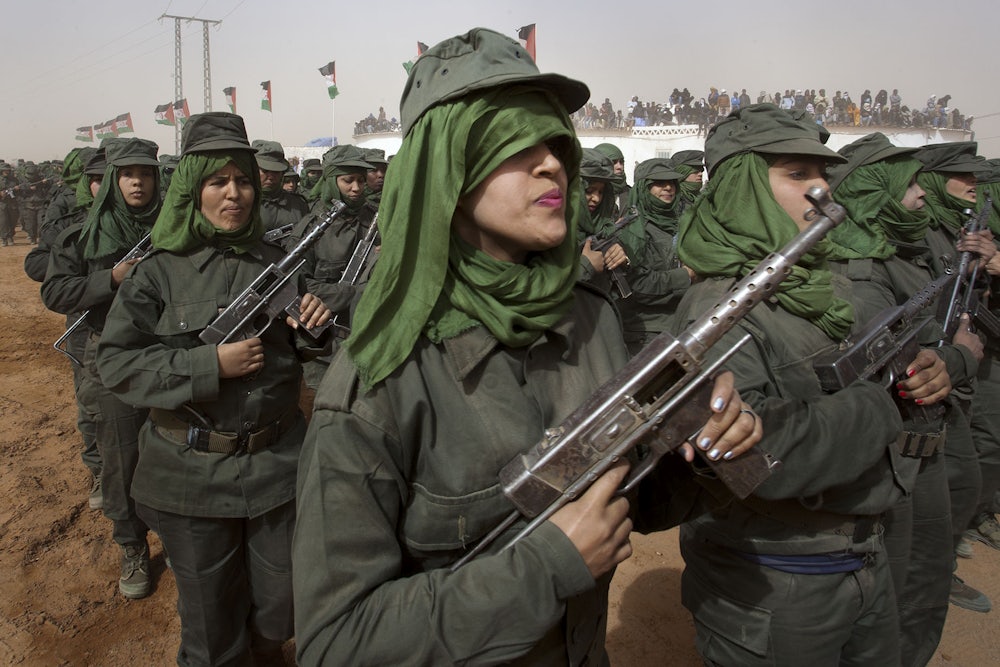For over 40 years, the people of Western Sahara have endured war and occupation—yet few outside of northern Africa have ever heard of them or their suffering. In 1975, their vast territory—some 100,000 square miles of desert bordering the Atlantic—was invaded by Morocco. Almost half of the traditionally nomadic Sahrawi population was driven into remote refugee camps in neighboring Algeria, where 165,000 remain to this day. An entire generation has been born and raised in these camps.
Following Morocco’s occupation, the Sahrawis waged a long war of resistance. It ended in 1991, when Morocco agreed to allow the Sahrawis to vote on independence. But thanks to Moroccan obstruction, that referendum has never taken place. The United Nations has done almost nothing, and the United States and European Union—both of which railed against Russia’s intrusion into Ukraine—have refused to defend the Sahrawis.
I have visited the refugee camps as a diplomatic adviser to the Sahrawis, and have come away inspired by the vibrant and democratic society they have built. Their vitality and determination shine through in these remarkable images by Anthony Jean, who has documented life in the camps over the past six years. But there is also a mounting sense of despair among the refugees and, for some, a desire to return to armed struggle.
Morocco has sealed off the occupied territory with a towering sand wall that stretches for 1,700 miles across the desert, fortified by the world’s longest minefield. Journalists are rarely permitted inside; small wonder, given Morocco’s systematic abuse of human rights. Included here are rare photos of the Gdeim Izik protests in Western Sahara. In 2010, when thousands of Sahrawis demonstrated for their political freedom, Morocco responded by attacking them with helicopters and ground troops, using rubber bullets and water cannons to disperse the uprising. Seven years later, many of the protesters remain in Moroccan custody, subjected to unjust military trials and torture.
The true beginning of the Arab Spring, as Noam Chomsky has observed, took place in the camps of Gdeim Izik. And it is there, in Western Sahara, that the nations of the world must put an end to Morocco’s unlawful occupation, granting freedom and independence to Africa’s last colony.
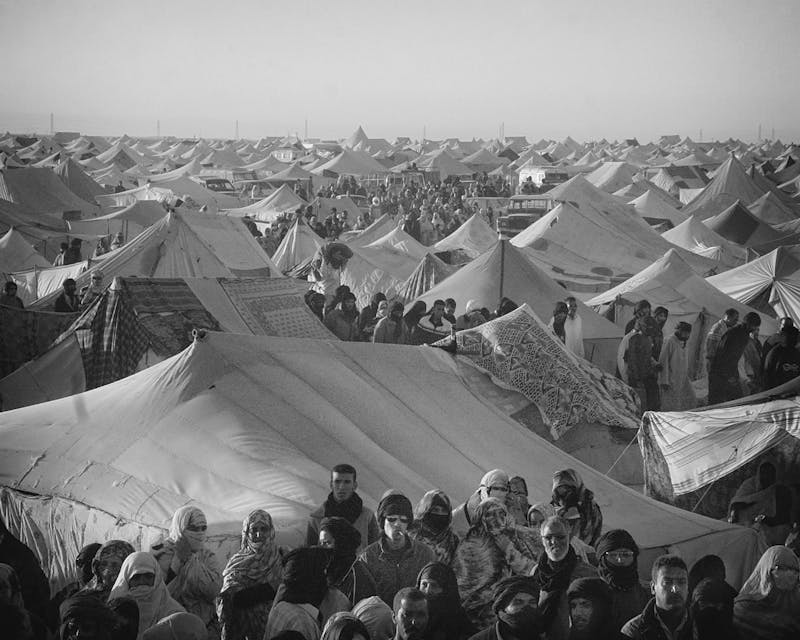
In October 2010, Sahrawi activists erected tents at Gdeim Izik, not far from the capital of Western Sahara. Within weeks, 20,000 protesters had descended on the makeshift camp—the largest display of civil disobedience since Morocco annexed Western Sahara in 1976.
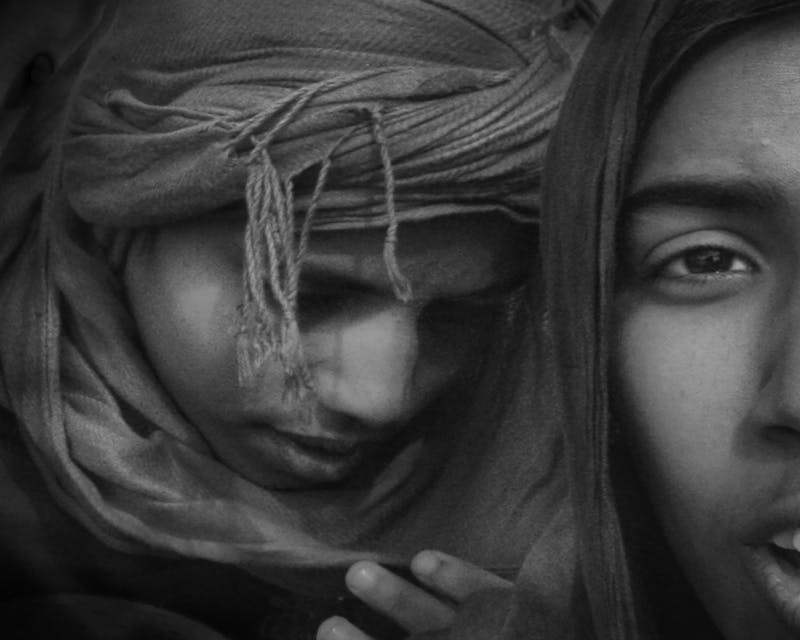
Nguia and Hayat, two young Sahrawis, photographed in 2010, joined the protests at Gdeim Izik a few weeks before the Moroccan army leveled the camp, attacking protesters with tear gas and water cannons. For the next six months, both women were imprisoned in cramped cells. Morocco routinely detains and tortures dissidents to maintain control over Western Sahara’s phosphate mines and oil reserves.
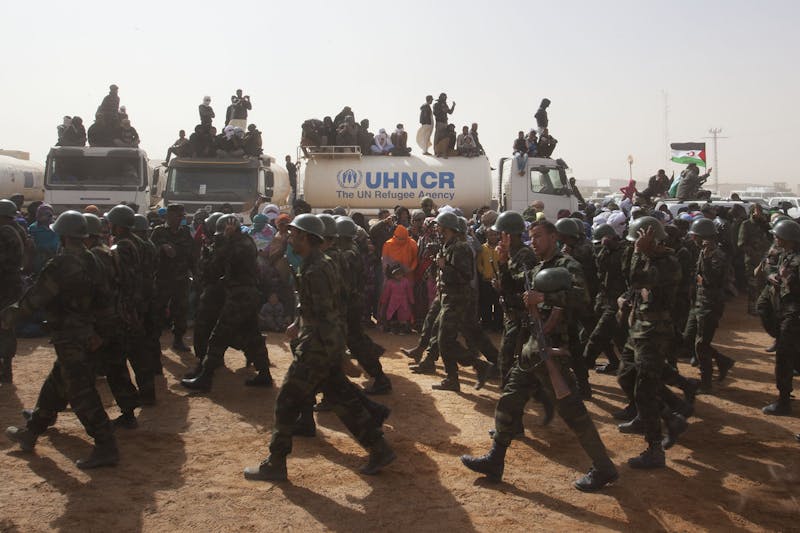
Sahrawi troops march in the Dakhla camp in February 2016, as the United Nations distributes water. The following month, Morocco expelled U.N. officials from Western Sahara after Secretary-General Ban Ki-moon called Morocco’s presence there an “occupation.” He has expressed concern about the “potential danger” that Sahrawi youth could be radicalized by Islamic extremists, given the protracted nature of the refugee crisis.
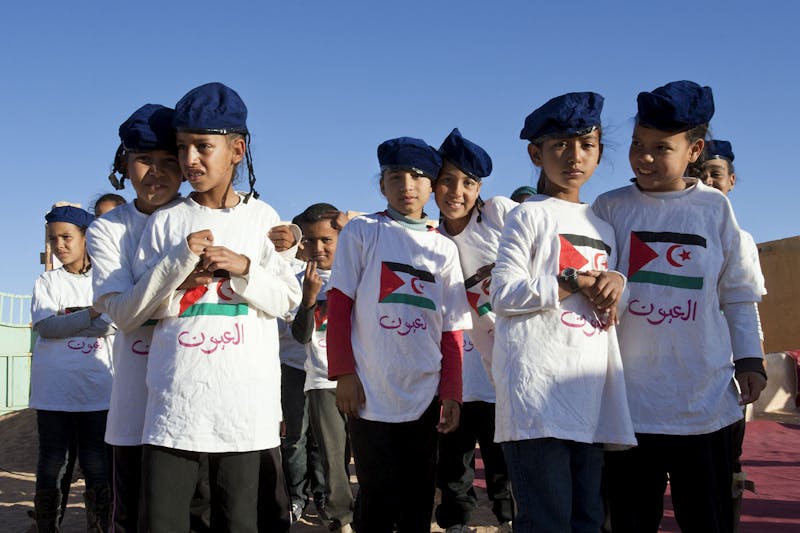
Schoolgirls between the ages of ten and twelve in El Ayoun, a refugee camp in Algeria. According to the United Nations, one in four young children in the camps suffer from stunting caused by malnutrition. The girls wear t-shirts bearing the flag of the Sahrawi Republic.
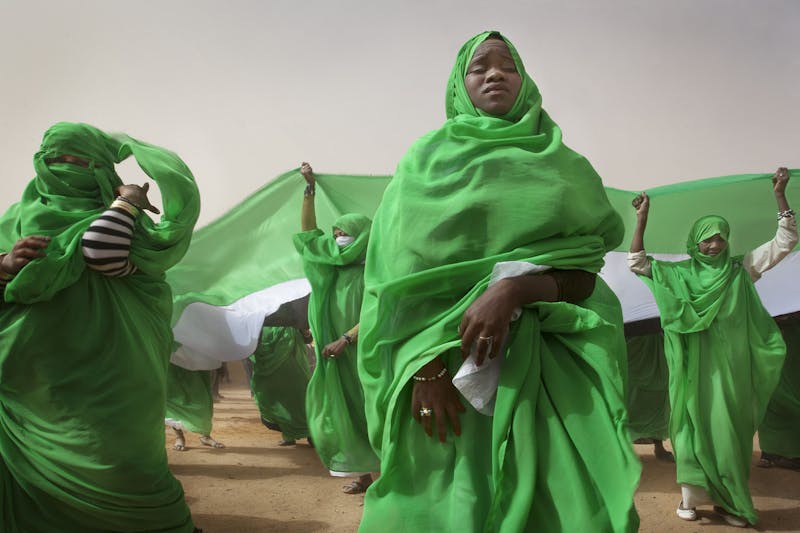
Women in the Dakhla camp perform a traditional dance to celebrate the republic’s founding. The Sahrawis are a matriarchal society, descended from nomadic Berber tribes in which women handled household finances and ran local communities. Today women sit in the Sahrawi parliament, administer the refugee camps, and train in the Sahrawi military.
